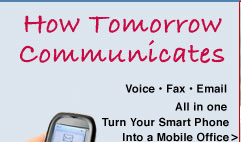Business Cards—Best Tips for Putting Your Future in the Palm of Someone's Hand
By Debra K. Traverso
Copyright 2007 by Debra Traverso, OneCall
All rights reserved in all media.
The content of this article may be forwarded in full without special permission provided it is used for nonprofit purposes and full attribution and copyright notice are given. For all other purposes, contact Debra Traverso at dtraverso@makejustonecall.com.
You didn’t get into real estate so you could work like a dog. In fact, you probably made the decision because you wanted to build a profitable and predictable business that enables you to enjoy a life of your own. Mobile Manager helps you on both counts, making your work and your life a lot more like the one in your dreams.
Make no bones about it—business cards are more than a formality. An effective card (emphasis on the word effective) is arguably the best marketing tool you can use in building a business.
Besides being a succinct reference tool so clients can easily recall and reach you, business cards have evolved into being the perfect visual aid to enhance in-person introductions and, done well, serve as a mobile, one-dimensional, mini reflection of their owner. As such, business cards should be created with the same care and thought that you put into creating your entire career.
Read Between the Lines
Just because your card worked 10 years ago, doesn't mean it still works. As you've seen, commercials on TV and radio have matured through the years, and so must the commercial on your card. When prospects read your card, they don't just glean information anymore. Marketing progression has taught them, however subliminally, to assimilate cues about:
- Your work and how you do it
- Your personality and how you view yourself
- What you stand for and how you want to be perceived
- Your cleverness and business planning
- Your level of focus on the client
- Your understanding of the client's needs
Phew! Who'd have thought that so much was conveyed on a business card? Think about it—when you look at cards from other service providers, regardless of the service, you can tell a lot about how those providers view their work and how customer-focused they are (or aren't).
The 'Must Haves' Include all your contact information: name, company, company's logo, address, e-mail, phone numbers, and Web page if you have one (and you should!). However, before concluding that "I do all that," let's take a closer look:
- Name—If your last name is hard to pronounce, consider putting the phonetic spelling in parentheses so that people won't hesitate to call you for fear of embarrassing themselves.
- Company—Whether the company names appear alone or embedded in a logo, opt to keep it small, just large enough to read. Make your name larger (where allowed by law). Real estate is a people business; as such, people want the relationship with you, and only an affiliation with your company. As such, you are probably more pertinent to them than your company.
- E-mail—Keep your e-address professional.
- Phone numbers—Without a doubt, a stack of phone numbers is the number one mistake REALTORS® make on their business cards. Instead of saying "Look how easy I am to reach," those crowded cards say, "Look how hard you'll have to work to find me." Solution: Subscribe to OneCall's unified messaging service that will help you clean up that card by consolidating your phone, cell and fax numbers into one number.
Added benefit: Such a service will also ease the unreliability and high prices that come with using a cell phone alone. What's more, if everyone in your office uses the service, it will replace your costly and often-unreliable in-house voicemail, and will network multiple offices at no capital expense.)
Next, add your broker/owner number to your card, and you only have to make space for two numbers instead of four or more! Still not convinced? Then see the latest NAR stats which suggest that prospects will move onto another card before they'll tackle your mountain of numbers.
- Web page—Choose a memorable and unique domain name; this way, it will double as an offline marketing tool, supplementing and pulling together your marketing efforts into a cohesive theme. Best bet: Domain names should be descriptive and serve to identify your target market. Ideally, the domain name would also contain keywords that potential clients would use while searching. This simple focus will improve your site's search engine rankings dramatically. Be sure, however, to register your personal name as a second domain name that is directed to the same site; this will assist current clients who might now search for you by name.
You should also include your unique selling proposition (USP), a tagline, or some brief mantra that explains how you differ from your competition. To the general public, REALTORS® all look alike—make it clear how you differ so prospects will want to work with you and only you. Fortunately, because you've cut down on your telephone numbers (above), you now have room to add your differentiation (but limit it to seven or fewer words).
Use color stock or color ink. And Yes!—use your picture. Prospects have an easier time remembering a conversation or encounter when they can tie it to a face. Capitalize on that recall opportunity by adding your picture.
Little Things Mean A Lot
Once you've established the basics that you must include, it's time to jazz 'em up. Why? Because people remember clever people. For example, who could possibly know every street in your town? Make it easy for clients to find you—Enhance your address with a landmark, placed in parentheses: (Beside Route 70) or (Behind K-Mart.) Another example: Now that you've adopted one powerful phone number rather than four weak ones, give it an explanatory name: "Find-Me-Fax-Me," or "Reach Me 24/7" or "Reach Me Instantly."
Let's Hear It for the Backside
Savvy REALTORS® have a compelling and well-thought-out 30-second commercial prepared for first and unexpected encounters. Then, they supplement their introductions with a visual aid—their business card. Hopefully, they've also used the back of that card to reinforce information that they verbalize during introductions, or tidbits that support their marketing focus.
Other back-of-the-card information that might fit your marketing focus includes: a pithy mission statement, testimonials, a brief (but unique) bio, a calendar, interest rate guidelines, facts about your town. The idea is to make the information worthy of saving and referencing.
The Never Evers
- Don't cross out—or use stickers to cover—outdated information. Always carry current cards. Most people immediately translate "My new cards haven't come in yet" as "I'm cheap, so I'm using all these cards before I order more."
- DON'T USE ALL CAPITAL LETTERS BECAUSE THEY'RE TOO HARD TO READ.
- Avoid hard-to-read typefaces. If in doubt, leave them out.
- Slow down!—Give your cards a test run. Ask a friend who wears reading glasses to review them. If their arm isn't long enough, your card is a no-go.
Compare Cards
Final piece of advice: Collect and compare cards. Years ago, this author had to do just that for a huge marketing project in graduate school. Results: Her initial impressions were the very same as her final assessment. The only difference was that her final assessment involved hundreds of hours of review, debate, analysis, surveys, interviews, and study of graphic elements. So, go with your immediate reaction and save yourself the drawn-out study. Spread your collected cards on a table. You'll know almost instantly which ones are winners and which don't work.
Copyright 2007 by Debra Traverso, OneCall
All rights reserved in all media.








